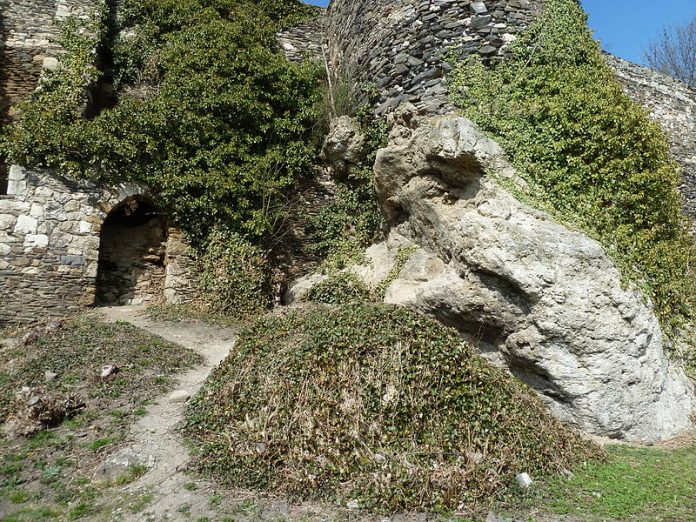Homo sapiens ຫຼືມະນຸດຍຸກສະ ໄໝ ໃໝ່ ໄດ້ພັດທະນາປະມານ 200,000 ປີກ່ອນໃນອາຟຣິກາຕາເວັນອອກໃກ້ກັບປະເທດເອທິໂອເປຍຍຸກສະ ໄໝ ໃໝ່. ພວກເຂົາອາໄສຢູ່ໃນອາຟຣິກາເປັນເວລາດົນນານ. ປະມານ 55,000 ປີກ່ອນ ເຂົາເຈົ້າໄດ້ກະຈັດກະຈາຍໄປຢູ່ບ່ອນຕ່າງໆຂອງໂລກ ລວມທັງໄປຢູເຣເຊຍ ແລະໄດ້ສືບຕໍ່ຄອບຄອງໂລກຕາມກຳນົດ.
The oldest evidence of human existence in ເອີຣົບ ໄດ້ພົບເຫັນຢູ່ໃນ ຖໍ້າ Bacho Kiro, Bulgaria. ມະນຸດທີ່ຍັງເຫຼືອຢູ່ໃນສະຖານທີ່ນີ້ແມ່ນມີອາຍຸເຖິງ 47,000 ປີ H. sapiens ໄດ້ໄປເຖິງເອີຣົບຕາເວັນອອກ 47,000 ປີກ່ອນທີ່ຈະປະຈຸບັນ.
ຢ່າງໃດກໍຕາມ, Eurasia ເຄີຍເປັນດິນແດນຂອງ neanderthals (homo neanderthalensis), an extinct species of ancient humans who lived in ເອີຣົບ and Asia between 400,000 years before present to about 40,000 years before present. They were good tool maker and hunter. H. sapiens did not evolve from neanderthals. Instead, both were close relatives. As shown in fossil records, neanderthals differed markedly from Homo sapiens anatomically in the skull, ear bones and pelvis. The former were shorter in height, had stockier bodies and had heavy brows and big noses. Therefore, based on significant differences in physical traits, neanderthals and homo sapiens are traditionally considered to be two distinct species. Nevertheless, H. neanderthalensis ແລະ H. sapiens interbred outside Africa when the later met neanderthals in Eurasia after leaving Africa. The present human populations whose ancestors had lived outside Africa have about 2% neanderthal DNA in their genome. Neanderthal ancestry is found in modern African populations as well perhaps because of migration of ຊາວເອີຣົບ into Africa over the past 20,000 years.
The co-existence of neanderthals and H. sapiens in the ເອີຣົບ has been debated. Some thought that the neanderthals disappeared from northwestern ເອີຣົບ before the arrival of H. sapiens. Based on the study of stone tools and fragments of skeletal remains at the site, it was not possible to determine whether specific excavated levels at archaeological sites are associated with Neanderthals or H. sapiens. After reaching ເອີຣົບ, ໄດ້ H. sapiens ອາໄສຢູ່ຄຽງຂ້າງ (neanderthals) ກ່ອນທີ່ neanderthals ປະເຊີນກັບການສູນພັນ?
ອຸດສາຫະກໍາເຄື່ອງມືກ້ອນຫີນ Lincombian-Ranisian-Jerzmanowician (LRJ) ຢູ່ສະຖານທີ່ໂບຮານຄະດີທີ່ Ilsenhöhle ໃນ Ranis, ເຢຍລະມັນແມ່ນກໍລະນີທີ່ຫນ້າສົນໃຈ. ມັນບໍ່ສາມາດພິສູດໄດ້ຢ່າງແນ່ນອນວ່າເວັບໄຊທ໌ນີ້ແມ່ນກ່ຽວຂ້ອງກັບ neanderthals ຫຼື H. sapiens.
In studies published recently, researchers extracted the DNA ບູຮານ from the skeletal fragments from this site and upon mitochondrial DNA analysis and direct radiocarbon dating of the remains found that remains belonged to modern human population and were about 45,000 years old which makes it the earliest H. sapiens remains in Northern ເອີຣົບ.
The studies showed that Homo sapiens were present in central and northwestern ເອີຣົບ long before extinction of Neanderthals in southwestern ເອີຣົບ and indicated that both species coexisted in Europe during the transitional period for about 15,000 years. H. sapiens at LRJ were small pioneer groups who were connected to wider populations of H. sapiens in eastern and central Europe.It was also found that around 45,000-43,000 years ago, cold climate prevailed across the sites at Ilsenhöhle and had a cold steppe setting. Directly dated human bones at the site suggest that H. sapiens could use the site and operate thus showing ability to adapt to the prevailing severe cold conditions.
The studies are significant because it identifies an early spread of H. sapiens into cold steppes in northern ເອີຣົບ 45,000 years ago. The humans could adapt to the extreme cold conditions and operate as small mobile groups of pioneers.
***
ເອກະສານ:
- Mylopotamitaki, D., Weiss, M., Fewlass, H. et al. Homo sapiens ມາຮອດເສັ້ນຂະໜານທີ່ສູງກວ່າຂອງເອີຣົບເມື່ອ 45,000 ປີກ່ອນ. ທຳມະຊາດ 626, 341–346 (2024). https://doi.org/10.1038/s41586-023-06923-7
- Pederzani, S., Britton, K., Trost, M. et al ໄອໂຊໂທບທີ່ຄົງທີ່ສະແດງໃຫ້ເຫັນ Homo sapiens ກະຈາຍໄປໃນ steppes ເຢັນປະມານ 45,000 ປີກ່ອນຢູ່ Ilsenhöhle ໃນ Ranis, ເຢຍລະມັນ. Nat Ecol Evol (2024). https://doi.org/10.1038/s41559-023-02318-z
- Smith, GM, Ruebens, K., Zavala, EI et al. ນິເວດວິທະຍາ, ການຢູ່ລອດ ແລະອາຫານຂອງ Homo sapiens ອາຍຸ 45,000 ປີ ຢູ່ Ilsenhöhle ໃນ Ranis, ເຢຍລະມັນ. Nat Ecol Evol (2024). https://doi.org/10.1038/s41559-023-02303-6
***






































